Lucifer
Otto Rahn (Dutch)
Otto Rahn werd geboren in Michelstadt (Odenwald) op 18 februari 1904. Na zijn middelbare studies (en de eerste wereldoorlog) trekt hij naar de universiteit waar hij aanvankelijk rechten studeert. Maar al spoedig gaat zijn belangstelling uit naar de literatuur en laat hij zich inschrijven aan de faculteit der letteren in Heidelberg. Zijn droom is literair recensent te worden voor een krant of tijdschrift.
Als muziekliefhebber dweept hij met Wagner. Diens "Parsifal" brengt hem in contact met de graallegenden en hun Duitse auteur Wolfram von Eschenbach. Die studie zal hem nooit meer loslaten.
Otto Rahn Biography
CHRONOLOGY 1904-1939
18 Feb 1904 Otto Rahn born, Michelstadt. Parents Karl & Clara (nee Hamburger)
1910-1916 Junior school at Bigen
1916-21 Secondary school at GrieBen
1922 obtains Baccalaureat
1924 obtains Bachelor in Philology and History
1930 Rahn begins his European travels (Paris, Provence, Switzerland,
Catalonia, Italy)
1931 Rahn visits French Pyrenees. Visits "Spion" in Pyrenees with Himmler and Abetz
1932 Rahn leads a Polaires expedition in Pyrenees
13.12.33 Rahn joins the German Writers Association
1934 publishes "Kreuzzug gegen Gral" (Crusade against the Grail)
1935 appointed to personal staff of Heinrich Himmler
29.2.36 Rahn joins Allgemeine-SS, member 276 208
1936 Rahn visits Iceland with 20 men
1937 publishes "Luzifers Hofgesind. Eine Reise zu denguten Gelstern Europa" (Lucifer's Court in Europe; Rahn sent back to Languedoc (Montsegur), says he will return in 1939. Time of alleged Corbieres visit?
20.4.37 promoted to sub-lieutenant (Untersturmfuhrer)
Sep-Dec1937 military service for "disciplinary reasons" at Oberbayern Regiment, Dachau<
Rennes-le-Chateau
Here, on the northern edge of the Pyrenees some 110 years ago, a Catholic priest named Bérengier Saunière became unbelievably wealthy overnight, seemingly after discovering something of immense value or significance in his church. He is said to have spent lavishly redesigning the tiny hill-top structure, building a strange belvedere tower called Tour Magdala and constructing a guest house known as Villa Bethania. He is also reported to have started acting oddly, erasing inscriptions on tomb stones, carrying out nocturnal excavations in both the church and churchyard, and receiving visitors totally beyond his standing as a parish curé in a rural part of southern France.
Otto Rahn – Otto Skorzeny Raiders of the Found Ark?
The founders of the Third Reich were esoterically involved with matters which unavoidably skirt the mysteries associated with the valley of Rennes-le-Chateau. Their interests were not however, confined to the ephemeral, there is evidence of the tenacity with which they pursued the material associations of the valley. Many assorted books on Rennes-le-Chateau mention that a battalion of German mining engineers made excavations in the area during World War Two.
The Holy Grail: Imagination and Belief
At the climax of the French prose romance, The Quest of the Holy Grail, Sir Galahad looks into the dish that was the object of the long and perilous search by himself and his companions, Sir Perceval and Sir Bors. This is his report:
For now I see openly what tongue cannot describe nor heart conceive. Here I see the beginning of great daring and the prime cause of prowess; here I see the marvel of all other marvels.
Fascination with the Grail
The reality behind the myth...
Sagas describe the Holy Grail as a chalice with fairy-tale powers; it’s been the inspiration for countless tales, legends and also works of art. And it is both a stranger to the Christian body of thought -- and yet somehow connected with Christianity in mysterious ways. What is it about the "Holy Grail"? Why is it still the subject for mainstream movies like Indiana Jones and the Last Crusade and The Fisher King? Is there something more substantial behind the Grail than simple legend? If we can delve deeper into the true meaning of the Grail, the core of many poems, legends, novels, and fairy tales may become apparent.
The more seriously someone undertakes to approach the subject "Grail" -- because he feels touched personally by it -- the more certainly will he come up against questions such as whether or not the knowledge about the Grail can be traced back to some revelation… A revelation handed down out of a mythical distant time, but weighed down, proliferated and falsified on its way through time, through the world and the life of countless generations. Let us begin at the beginning...
Еhe church's war on the cathars
During the eleventh and twelfth centuries, the region known as the Languedoc, spreading approximately southward from the Loire to the Pyrenees down into Arragon and eastward to the Rhone, became the most highly civilized area of Western Europe. Its fertile soil and pleasant climate provided the means for a leisurely life. The Rhone and the Garonne were notable routes of communication and the passage of many Crusaders on their way to the East gave an immense stimulus to trade. Above all the Moslem conquest of Spain had brought the influence of Arabic culture. The larger cities had schools of medicine, mathematics and astrology where Arabian scholarship was imparted. Jews were not debarred from public life and were highly respected as doctors and teachers. The Catholic Church no longer held the monopoly of knowledge; and were gradually losing their power hold in the Languedoc.
Invisible Eagle and NS Occult History, by Alan Baker
While in Berlin, [Karl Maria] Weisthor worked with the author and historian Otto Rahn (1904-1939), who had a profound interest in medieval Grail legends and the Cathar heresy. In 1933, Rahn published a romantic historical work entitled Kreuzzug gegen den Gral (Crusade Against the Grail), which was a study of the Albigensian Crusade, a war between the Roman Catholic church and the Cathars (or Albigensians), an ascetic religious sect that flourished in southern France in the twelfth and thirteenth centuries. The Cathars believed that the teachings of Christ had been corrupted by the Church -and, indeed, that Christ was exclusively a being of spirit who had never been incarnated in human form.
Отто Ран и поиски Святого Грааля
Отто Ран (1904-1938 гг.), о котором говорили как о талантливом молодом литераторе и историке, был одной из действительно ярких личностей этого века. До своей загадочной смерти в возрасте 35 лет он успел написать две книги о катарах южной Франции: "Крестовый поход против Грааля" ("Kreuzzug gegen den Gral") и "Двор Люцифера" ("Luzifers Hofgesind"). О его жизни и трагической смерти ходят легенды. Хотя его книги оказали влияние на таких известных русскому читателю авторов как Тревор Равенскрофт (Trevor Ravenscroft) и Жан-Мишель Анжебер (Jean-Michel Angebert), на русский язык они никогда не переводились. В бестселлере 1982 года "Святая кровь, святой Грааль" (Holy Blood, Holy Grail - в русском переводе "Священная загадка") имя Отто Рана упоминается в небольшом, но интригующем примечании.
Otto Rahn and the Quest for the Holy Grail
Otto Rahn (1904-1938), described as a gifted young author and historian, was one of this century's truly fascinating figures. Prior to his mysterious death, at age 35, he wrote two books about the Cathars of southern France: *Kreuzzug gegen den Gral* ("Crusade Against the Grail") and *Luzifers Hofgesinf* ("Lucifer's Court"). Legends continue to surround both his life and tragic death. While his books influenced such authors as Trevor Ravenscroft and Jean-Michel Angebert, they were never translated into English. In the 1982 best selling book *Holy Blood, Holy Grail*, Otto Rahn's name appears in a small but intriguing footnote. Otto Rahn believed that he had found the location of the Holy Grail Mountain, the Montsalvat of legend, in the Cathar mountain fortress of Montsegur in the French Pyrenees. He was, says Prof. Joscelyn Godwin, "largely responsible for the mythological complex that associated the Cathars and Montsegur with the Holy Grail and its Castle."
Norma Lorre Goodrich in her own highly acclaimed work *The Holy Grail* pays tribute to Otto Rahn's "Crusade Against the Grail" describing it as "a wonderful book, a monument to this German idealist author, who died mysteriously during a descent in the Alps."

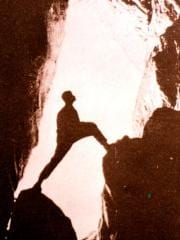

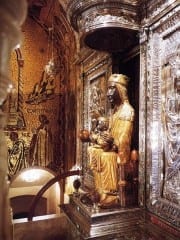
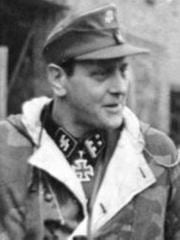


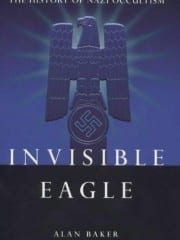
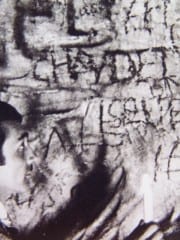
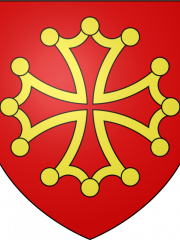
Commenti recenti
13 anni 16 settimane fa
13 anni 16 settimane fa
13 anni 16 settimane fa
13 anni 17 settimane fa
13 anni 20 settimane fa
13 anni 26 settimane fa